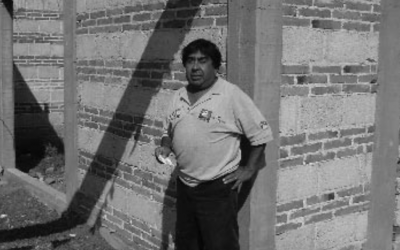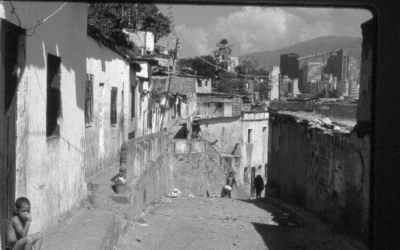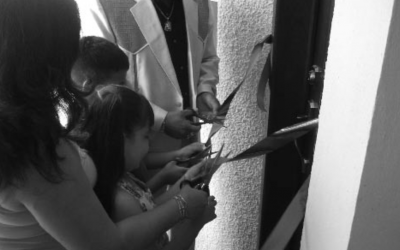A Review of Brazil through the eyes of William James: Letters, Diaries, and Drawings, (1865-1866)
Observations and Impressions: William James’ Expedition to Brazil
 Brazil through the eyes of William James: Letters, Diaries, and Drawings, (1865-1866)
Brazil through the eyes of William James: Letters, Diaries, and Drawings, (1865-1866)
Edited by Maria Helena P. T. Machado.
David Rockefeller Center for Latin American Studies
Harvard University Press, Cambridge, MA, 2006, 228 pp.
William James’s journey to Brazil puts him in the company of other eminent “New Englanders” whose time there would prove to be life changing, like Teddy Roosevelt (who was born in New York City but attended Harvard College) and the poetess Elizabeth Bishop. Long before them, William James recorded his Brazilian experiences, and these documents are at last published under a single volume, Brazil through the eyes of William James: Letters, Diaries, and Drawings, (1865-1866), edited by Maria Helena P. T. Machado. By making a number of texts and sketches available in full and in Portuguese for the first time, this bilingual edition (with translations by John M. Monteiro) not only fills a lacuna to William James scholars, but should also be of interest to students of Brazil and of how it has been perceived by foreigners.
William James traveled to Brazil in 1865-66 at the age of 23, as a member of the Thayer Expedition led by Louis Agassiz, the influential director of the Museum of Comparative Zoology and professor at Harvard’s Lawrence Scientific School. During the eight-month stay he visited Rio de Janeiro, Belém, Manaus, and several river villages along the Amazon basin. Armed with a healthy skepticism toward the goals of the naturalist enterprise from the very beginning, James seems to waiver in his assessments of Agassiz, of the collecting expeditions, and of Brazil and Brazilians in general. Agassiz first strikes him “as one of the most fascinating men personally that I ever saw” (56) before he snidely notes the professor’s “charlatanerie” (58) and that “never did a man utter a greater amount of humbug” (76)—but at last he settles for reporting the renowned scientist’s “wonderful qualities” in letters to his family back home.
James expresses similarly mixed feelings about the value of the trip. He claims that arriving in Rio de Janeiro was “I think the day of my life on which I had the most outward enjoyment” (54) and later decides: “My coming was a mistake.” Rio de Janeiro seems to have produced a dizzying effect on the second-year Harvard medical student, and one wishes his health problems (apparently smallpox and temporary loss of eyesight) had not gotten in the way of potential observations. James’ immediate dazzlement with Rio’s nature does not constitute a first or a last among the city’s many visitors—after ascending the Corcovado mountain (where the ubiquitous art deco statue of Christ now stands), he remarks: “The finest view I ever saw […] The sea and mountains and clouds, & forests, together, made a scene which can be neither imagined nor described” (59). Yet, these positive impressions quickly gave place to frequent frustration.
The future philosopher seemed unable (or unwilling) to make up his mind about Brazil and its peoples: “The Brazilians are not so polite after all” (64) he quips, later writing: “Brazilian hospitality surpasses everything I ever dreamt of” (67). And although (as Machado’s introductory essay contends) James at times “is capable of empathizing with the local inhabitants,” he can also matter-of-factly describe a “wild Indian” kidnapped to serve as “cabin boy” in less-than-sensitive ways: “he is a real willing young savage & we hope, by keeping him low & weak to make an excellent servant of him for all the time we are on the Amazonas” (70).
We may speculate that some of James’ contradictory reactions are not merely symptomatic of a 23 year old’s first extended foray away from an absorbing family, but rather reflect the paradoxical realities of the places he visits. One familiar with 19th century Rio de Janeiro, for example, can certainly understand how a North American visitor would comment in the same paragraph that “The town “realizes” my idea of an african town in its architecture and effect” and that “The streets in town & shops remind you so much of Europe.” (54-55).
Despite his eagerness to embrace certain aspects of local life (such as sleeping in a hammock) and general interest in what he encounters, in his letters William James often gives the impression of having left his mind in the U.S. Nonetheless, the exploring expedition in Brazil did leave the future founder of Pragmatism with a few certainties: “I am convinced now, for good, that I am cut out for a speculative rather than an active life” (61). James displays a good dose of self-awareness and self-criticism, particularly with regards to his linguistic ineptitudes, feeling “almost […] humiliated” at not being able to “utter […] thanks in intelligible speech” (73). And in his diary he contrasts his boatman, Sr. Urbano, to “our damned anglo saxon brutality and vulgarity” (92). But in the end, among other things, his sojourn seemed to cement a perspective of the U.S., posited in contrast to a Brazil that might still inhabit the imaginary of some North-Americans: “I am beginning to get impatient with the brazilian sleepiness & ignorance. These Indians are particularly exasperating by their laziness & stolidity. […] I had no idea before of [the] real greatness of [north] american energy” (77).
One does, however, occasionally catch him seduced by the rhythms of “life in the tropics,” and even prone to feelings of saudades: “I dare say when I get home I shall have for a time many a pang of nostalgia for this placid Arcadia” (85). Brazil through the eyes of William James also reveals a promise of life-long friendship (and an attempt at Portuguese) among his papers, in the draft of a letter written to João, son of James’s host in Óbidos (a river town on the lower Amazon). Besides the wealth of material left by James, which includes the incomplete “A Month on the Solimoens” and a list of Tupi-Portuguese-English vocabulary (with a translation for “My dear, will you marry me?”), this carefully annotated edition incorporates a map of Brazil with the expedition’s destinations, and a useful list of people, places and terms.
The volume also includes a comprehensive introduction by Maria Helena Machado, which provides background information about the expedition and its members, as well as about William James’ personal life, ably weaving in prior scholarship and biographies. Her essay further situates such trips in the formation of young men among the upper crusts of 19th century Boston society, and contextualizes the Thayer expedition within contemporary scientific currents. Machado highlights the debates over creationism (supported by Agassiz) and evolutionism (with which William James sympathized). She also brings attention to Agassiz’s infamous role in the development of scientific racism (as a proponent of polygenism) and explains the expedition in terms of U.S. geopolitical and economic interests—arguing, for example, that Agassiz exerted his influence over Emperor Pedro II to further U.S. pressures for opening the Amazon to free navigation. William James, however, seemed to remain either oblivious or disinterested in these colonialist undertones…
The private nature of most of James’ Brazil papers in fact complicates the essay’s view in that they make a “contribution” to travel literature—a genre presupposing a wider public than his.
At any rate, Maria Helena Machado places this journey to Brazil—central to William James’ personal, intellectual and professional development—at the center of an important and useful publication.
Bruno Carvalho is a third-year graduate student in the Romance Languages and Literatures Department at Harvard University.
Related Articles
The Role of Government
In current discussions of market initiatives oriented towards low-income populations around the world, the government is often like the empty chair around a table. We all know its occupant exists …
Market Initiative with Low-Income Sectors
Angela, a power inspection crew member at AES-Electricidad de Caracas (AES-EDC), was inspecting an energy tower installed near a Caracas barrio. Nearby dwellers tapped the tower to get free power. …
Unlocking Opportunity
Should a private enterprise prosper by providing essential services to the poor? Consider the case of Sociedad de Aqueducto, Alcantarillado y Aseo (AAA) …




